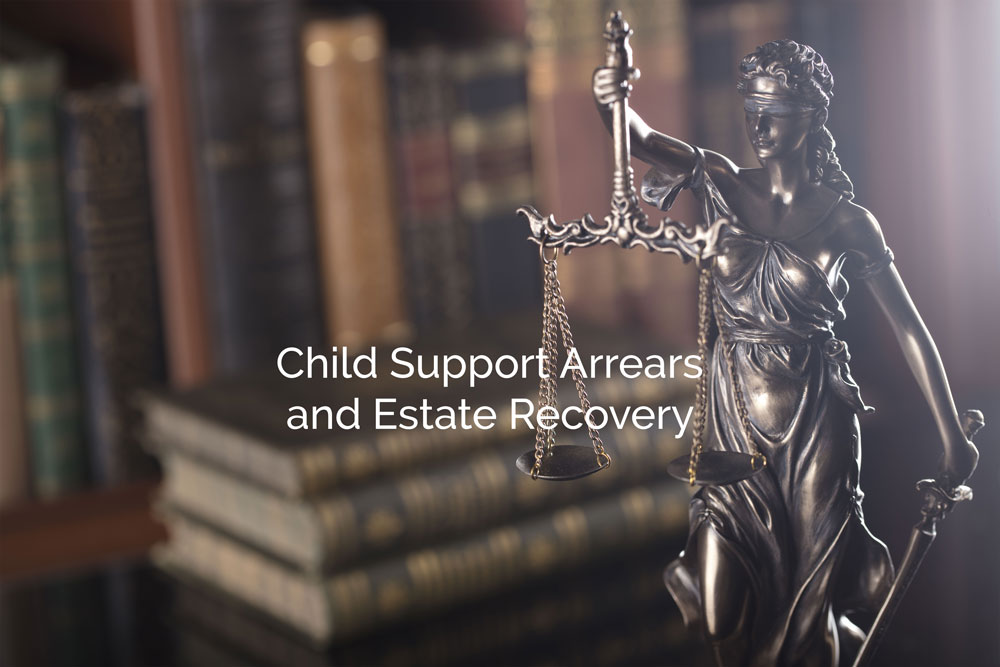
Although some states have eased COVID-related restrictions on small businesses, many businesses are still struggling. The Internal Revenue Service (IRS) and the Small Business Administration (SBA) continue to issue guidance for small businesses that seek to benefit from the COVID-relief legislation passed in 2020. In addition, the American Rescue Plan Act, the new stimulus legislation signed into law by President Biden on March 11, 2021, provides additional funding for the Paycheck Protection Program (PPP) as well as aid for certain business sectors that have been particularly hard-hit by the COVID-19 pandemic.
IRS Notice 2021-20: Guidance on the Employee Retention Credit
Notice 2021-20, issued March 1, 2021, provides guidance in the form of seventy-one questions and answers for employers interested in claiming the Employee Retention Credit (ERC) for 2020, a tax credit provided under the Coronavirus Aid, Relief, and Economic Security (CARES) Act signed into law on March 27, 2020. The ERC is available to eligible employers—business owners that were required to fully or partially suspend their operations in 2020 because of a governmental order or whose gross receipts declined by more than 50 percent compared to the same quarter in 2019 but who nonetheless retained and paid employees. The credit is equal to 50 percent of the qualified wages (including allocable qualified health plan expenses) that business owners pay their employees, up to a maximum of $10,000 in qualified wages per employee, to offset their 6.2 percent share of Social Security taxes.
The ERC was extended and modified by the Taxpayer Certainty and Disaster Tax Relief Act of 2020 (Tax Relief Act of 2020) passed in late December 2020. Notice 2021-20 discusses the ERC only as it applies to qualified wages paid after March 12, 2020, and before January 1, 2021. The IRS will address the changes applicable to the ERC pursuant to the Tax Relief Act of 2020 for qualified wages paid after December 31, 2020, in future guidance.
Notice 2021-20 provides important information for employers that intend to claim the ERC, and some of the most substantive guidance addresses PPP borrowers. Under the CARES Act, the ERC was not available to eligible employers who received a PPP loan. However, the Tax Relief Act of 2020 changed the law to expand eligibility for the ERC to PPP borrowers, making the modification retroactive to the original effective date of the CARES Act. If an employer claims the ERC for qualified wages, however, those wages are excluded from the payroll costs paid during the covered period that qualify for forgiveness under the PPP.
The CARES Act, as amended by the Tax Relief Act of 2020, allows an employer to elect not to take certain qualified wages into account for purposes of the ERC. Generally, an eligible employer makes the election by not claiming the ERC for those qualified wages on its federal employment tax return. However, Notice 2021-20 includes the following clarifications regarding the election relevant to PPP borrowers in Question 49:
- An eligible employer that is a PPP borrower will be deemed to have made the election for qualified wages included in the amount reported as payroll costs on a PPP loan forgiveness application up to, but not exceeding, the minimum amount of payroll costs along with any other eligible expenses reported on the application sufficient to support the amount of the PPP loan that is forgiven.
IRS Example: If an employer received a PPP loan of $200,000, paid $250,000 in qualified wages, and submitted a PPP loan forgiveness application reporting the $250,000 in qualified wages, the employer will be deemed to have elected not to take into account $200,000 of the qualified wages for purposes of the ERC, but will not be deemed to have made that election with respect to the other $50,000 of qualified wages. Thus, the employer may treat the $50,000 as qualified wages for purposes of claiming the ERC.
- To the extent that an eligible employer does not include qualified wages as payroll costs on a PPP loan forgiveness application, the eligible employer will not be deemed to have elected not to take those qualified wages into account for purposes of the ERC.
- Even if an eligible employer is deemed to have made an election as a result of reporting qualified wages as payroll costs on a PPP loan forgiveness application, those qualified wages may be taken into account for purposes of the ERC if the loan is not forgiven.
- If an eligible employer obtains only partial forgiveness of a PPP loan, the employer will be deemed to have made an election only for the minimum amount of qualified wages included in the payroll costs reported on the PPP loan forgiveness application necessary to obtain the forgiveness of that amount of the PPP loan.
The deemed election described in Notice 2021-20 is helpful because employers that obtained a PPP loan in 2020 were prohibited under the CARES Act from claiming—and thus did not claim—the ERC for any qualified wages before the retroactive changes made in the Tax Relief Act of 2020. Unfortunately, if the employer only included qualified wages and did not include nonwage expenses on the PPP loan forgiveness application, there is currently no process for borrowers to amend a previously submitted PPP loan forgiveness application to report nonwage expenses, even if the employer paid sufficient qualified wages to have benefited from both PPP loan forgiveness and the ERC.
IRS Example: If an employer received a PPP loan of $200,000, paid $200,000 in qualified wages and $70,000 in other eligible expenses, and submitted a PPP loan forgiveness application reporting the $200,000 in qualified wages but not reporting the $70,000 in other eligible expenses, the employer will be deemed to have elected not to take the $200,000 of qualified wages into account for purposes of the ERC. Although the employer could have reported qualified wages of $130,000 as payroll costs and $70,000 of other eligible expenses on the PPP loan forgiveness application, allowing $70,000 to be treated as qualified wages for purposes of the ERC, the employer cannot subsequently reduce the deemed election by the amount of other eligible expenses it could have reported on the forgiveness application.
SBA Issues New PPP Interim Final Rule
In a new Interim Final Rule issued on March 3, 2021, the SBA established new maximum loan calculations for individuals who file an IRS Form 1040, Schedule C (i.e., sole proprietors, independent contractors, and self-employed individuals) and removed certain eligibility requirements.
Maximum loan calculations for Schedule C filers. Previous PPP rules defined the payroll costs eligible for PPP loan forgiveness for individuals who file an IRS Form 1040, Schedule C as the payroll costs for any employees plus net profits—that is, net earnings from self-employment. However, this definition excluded otherwise eligible sole proprietors with very little or negative net profit, including many female and economically disadvantaged sole proprietors and small businesses in underserved communities, because it did not take into account small business owners’ fixed and other business expenses that are necessary to stay in operation and keep them employed. As a result, the SBA determined that new PPP borrowers should be given the option to receive a loan based on their gross business income as follows:
- Schedule C filers with no employees may elect to calculate the owner compensation share of their payroll costs based on either the (1) net profit reported on line 31 or (2) gross income reported on line 7 of Schedule C.
- Schedule C filers with employees may elect to calculate the owner compensation share of their payroll costs based either on (1) net profit or (2) gross income minus expenses representing employee payroll costs (employee benefit programs as reported on line 14, pension and profit-sharing plans as reported on line 19, and wages less employment credits as reported on line 26).
To mitigate the risk of fraud, Schedule C filers electing to use gross income who reported more than $150,000 in gross income on the Schedule C used to calculate the PPP loan amount will not be deemed to have made the certification of good faith and their certifications may be subject to a review by the SBA.
Eligibility restrictions. Under previous PPP rules, PPP loans were not available for small businesses that had an owner of 20 percent or more equity who had been convicted, pleaded guilty or nolo contendere, or commenced any form of parole or probation for (1) a felony involving fraud, bribery, embezzlement, or a false statement on an application for a loan or federal financial assistance within the last five years or (2) any other felony within the last year. The new rule removes the one-year restriction for nonfinancial fraud felonies to remove barriers for individuals trying to make a fresh start as small business owners, consistent with policies underlying 2018 and 2019 criminal justice reform legislation. Because the need for speed in loan approvals and disbursements in the PPP results in a higher risk of fraud, the rule retains the previously established eligibility restriction prohibiting PPP loans to those convicted of financial fraud-related felonies within the past five years.
In addition, the new rule amends a prior rule establishing the ineligibility of individuals or businesses owned or controlled by individuals who have ever obtained a direct or guaranteed loan from any federal agency, including the SBA, if the loan is currently delinquent or if the loan was in default within the last seven years, causing a loss to the government, to exclude federal student loans.
Although most of the changes are not retroactive and thus apply only to first or second-draw PPP loans approved after March 4, 2021 (the effective date of the rule), the change in the PPP rules regarding student loans applies to new PPP applicants and borrowers who already have a PPP loan. This exception recognizes that although the PPP application requires disclosure of delinquent student debt, borrowers may have inadvertently made errors on their applications because of confusion about the status of their loans due to the suspension of payments and collection of federal student loans or whether loans not directly serviced or held by the US Department of Education are considered federal debt.
President Biden Signs American Rescue Plan Act of 2021
On March 11, 2021, President Biden signed the $1.9 trillion stimulus package called the American Rescue Plan Act of 2021 (the Act) into law. Several parts of the law are of interest to small business owners, including the following:
Additional funding and expansion of eligibility for PPP loans. Section 5001 of the Act appropriates $7.25 billion in additional funding for PPP loans. However, it does not extend the program, which is currently set to expire on March 31, 2021. In addition, the Act extends eligibility for PPP loans to certain nonprofits and digital news services.
Additional funding for Targeted Economic Injury Disaster Loan (EIDL) Advances. Section 5002 appropriates $15 billion in additional funding for Targeted Economic Injury Disaster Loan Advance payments for hard-hit small businesses in low-income communities. The Act makes $10 billion available to pay covered entities (businesses located in low-income communities that suffered losses of more than 30 percent during an eight-week period between March 2, 2020, and December 31, 2020) that have not received the full amounts to which they are entitled. Advance funds of up to $10,000 will be available to eligible applicants who previously received an EIDL Advance for less than $10,000, or those who applied but did not receive funds due to lack of available program funding. In addition, $5 billion is available for supplemental advances of $5,000 for eligible businesses that suffered an economic loss of more than 50 percent and employ not more than ten employees.
New funding for the Restaurant Revitalization Fund. Pursuant to Section 5003, restaurants, food stands and trucks, pubs, and other similar businesses where patrons or the public assemble for the primary purpose of being served food or drink will be eligible for grants from a newly established Restaurant Revitalization Fund to be administered by the SBA. The $28.6 billion in funding will be used to provide grants of up to $10 million to eligible applicants. The amount of each grant may not exceed the applicant’s “pandemic-related revenue loss,” which is generally the difference between the applicant’s 2019 and 2020 gross receipts. The grants may be used for payroll costs, principal and interest on a mortgage, rent payments, utilities, maintenance expenses (including the construction of outdoor seating), supplies (including protective equipment and cleaning supplies), food and beverage expenses, supplier costs, operational expenses, paid sick leave, and other expenses determined by the SBA to be essential. Small businesses owned and controlled by women, veterans, and the socially and economically disadvantaged are prioritized for the initial twenty-one-day period during which the SBA awards the grants. In addition, $5 billion is reserved for applicants who had $500,000 or less in gross receipts during 2019. Applicants must make a good faith certification that the uncertainty of current economic conditions makes the grant requested necessary to support their ongoing operations and that they have not applied for or received a grant under the Shuttered Venue Operators Grant program.
Additional funding and eligibility for the Shuttered Venue Operators Grant program. Section 5005 of the Act provides an additional $1.25 billion to the Shuttered Venue Operators Grant (SVOG) program established by the Economic Aid to Hard-Hit Small Businesses, Nonprofits, and Venues Act, which was signed into law on December 27, 2020, and provided an initial $15 billion in funding. The program provides relief for eligible live venue operators and promoters, theatrical producers, live performing arts organization operators, museum operators, motion picture theatre operators and talent representatives that have been significantly impacted by the COVID-19 pandemic in the amount of the lesser of $10 million or 45 percent of their 2019 gross earned revenue. The Act allows eligible businesses to apply for both a PPP loan and the SVOG program, which was prohibited under previous legislation. However, a new interim final rule issued by the SBA on March 18, 2021, clarifies that if a PPP applicant is approved for an SVOG before the SBA issues a loan number for the PPP loan, the applicant is ineligible for the PPP loan.
IRS Extends Tax Filing and Payment Deadline
On March 17, 2021, the IRS announced that the federal filing and payment deadline for individual taxpayers, including those who pay self-employment tax, has been extended to May 17, 2021, due to the challenges and unique circumstances surrounding the COVID-19 pandemic. The extension does not apply to estimated tax payments due on April 15, 2021. Victims of February winter storms in Texas, Oklahoma, and Louisiana still have until June 15, 2021, to file individual and business tax returns and make payments as announced by the IRS earlier in March.
WealthCounsel is here to help your practice adapt to the new challenges brought on by COVID-19. Visit our COVID-19 Resource page to access all of WealthCounsel’s latest resources and webinars to help you and your practice navigate this new reality.



